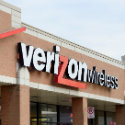Verizon: Nationwide 5G speeds will be 'similar' to 4G speeds
Apple's newest iPhones will support nationwide 5G connections on Verizon's network, but 'the experience [between 4G and nationwide 5G] is similar,' warned Verizon's Bill Stone.

Verizon on Tuesday announced the launch of its nationwide 5G service, but a top executive from the company warned that customers shouldn't expect too much right away.
"The experience [between 4G and nationwide 5G] is similar," Verizon VP Bill Stone told Light Reading. "It's not radically different."
However, he said that situation will change over the coming months and years as Verizon works to improve its network. "It's definitely early days," he said. "We're not done yet."
Verizon's acknowledgement is noteworthy considering the carrier blasted T-Mobile's 5G network earlier this year for providing speeds similar to those of T-Mobile's 4G service.
Stone said Verizon would primarily run its nationwide 5G service over its 850MHz spectrum holdings, but could also run it in its PCS and AWS spectrum holdings in select locations.
Stone's comments don't come as much of a surprise. Verizon CEO Hans Vestberg made similar statements in May when questioned about Verizon's nationwide 5G plans. "In the beginning, it's going to be small," Vestberg said of a nationwide 5G offering from Verizon.
Verizon's nationwide 5G launch coincided with the introduction of Apple's new iPhone 12 gadgets. In fact, Verizon's Vestberg played a starring role in Apple's hour-long unveiling, discussing the speedy connections the new devices could support.
However, Vestberg made it clear that the peak 4 Gbit/s speeds supported by the new iPhone 12 would only be available on the operator's millimeter wave (mmWave) 5G network. That network is only available in parts of a few dozen cities. Verizon brands its mmWave 5G service as "ultra wideband" or UWB.
Verizon said it will distinguish between the two networks via the icons on its phones. "5G" will indicate its nationwide network, while "5G UW" will indicate its mmWave network. AT&T employs similarly complex icon branding for its own 5G offerings.
Verizon said its "5G Nationwide" service will cover 200 million Americans via Dynamic Spectrum Sharing (DSS) technology. DSS is a 5G standard that allows 4G and 5G to essentially share the same spectrum band in 1ms increments.
That Verizon launched DSS is noteworthy considering the questions T-Mobile executives have raised about the technology. "Serious deficiencies exist in standards and implementations of this complex technology – for example chipsets and devices are unable to cancel complex interference created by DSS," T-Mobile's Mark McDiarmid, a top networking executive at the operator, wrote on LinkedIn roughly two weeks ago. "Additionally, there is no standard for coordinating interference cancellation between cell sites. DSS also creates Dynamic Interference! This is not new, we faced this in 4G but it took several years to remedy deficiencies in interference cancellation. Is DSS repeating this pattern?"
Verizon's Stone rejected those criticisms. "It's an absolutely fantastic tool," he said.
Stone also noted that Verizon expanded its mmWave 5G network into 55 cities, putting the carrier within sight of its goal to expand to 60 cities by the end of 2020. He said the operator is recording peak download speeds on its mmWave network of up to 4 Gbit/s via eight-component carrier aggregation technology, and 250 Mbit/s upload speeds via two-component carrier aggregation.
Related posts:
— Mike Dano, Editorial Director, 5G & Mobile Strategies, Light Reading | @mikeddano
About the Author(s)
You May Also Like




_International_Software_Products.jpeg?width=300&auto=webp&quality=80&disable=upscale)







